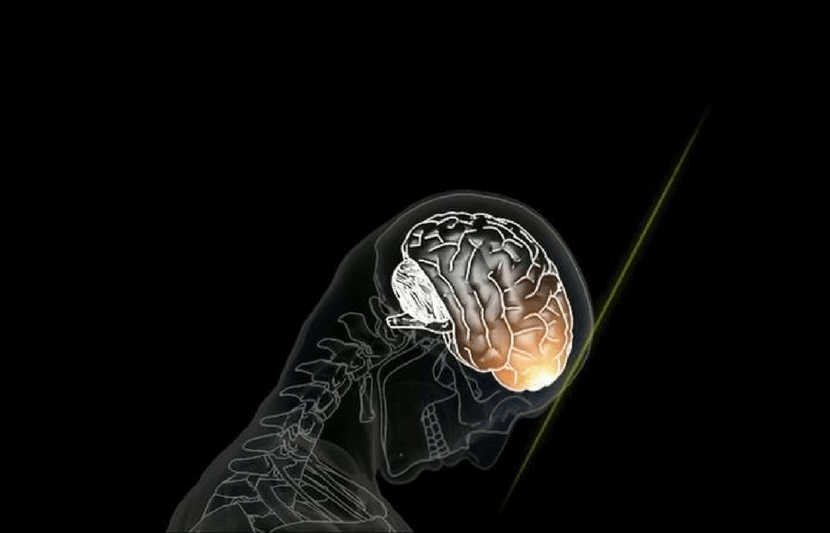Researchers at UCLA have found a way to ensure that concussions, even those that do not show up in a CAT or CT scan, can be diagnosed within an hour of injury so proper steps can be taken for recovery.
A concussion, according to the Center for Disease Control, is a traumatic brain injury (TBI) — sometimes characterized as mild traumatic brain injury (mTBI) — resulting from “a bump, blow, or jolt to the head or by a hit to the body that causes the head and brain to move rapidly back and forth.”
Concussions in the realm of sports — football, soccer, boxing, ice hockey, to name a few — have been in the news increasingly. We also now know that repeated concussions can lead to chronic traumatic encephalopathy (CTE), a degenerative brain disease.
The problem is, oftentimes it is difficult to diagnose concussions with today’s method of using CAT scans or a scoring system that relies on patient responses. Left undiagnosed, players or other people who have sustained a concussion are not taking the necessary steps for recovery.
Fortunately, researchers at UCLA have identified four proteins that could be used as biomarkers to detect not just brain trauma but even concussions that do not show up on CAT scans.
The biomarker proteins are released when certain brain cells known as astrocytes are damaged. Since astrocytes have extensions that connect with blood vessels, any damage to the membrane can be detected through blood testing.
“I worked on understanding what astrocytes do after an injury to the brain or spinal cord,” said Ina Wanner, an associate neuroscientist at UCLA’s David Geffen School of Medicine and the lead author on this study. “Scar tissue is typically formed after an injury and these astrocytes contribute to scar formation around an injury within the central nervous system.”
Wanner and her team started this project by experimenting with astrocytes in culture dishes. In this process, they noticed that when the membrane of the astrocytes sustained injury, specific proteins would be released. They then realized that those proteins in the surrounding fluid could be valuable brain injury biomarkers and proceeded to analyze blood samples from people who had sustained various degrees of TBIs. These analyses were done from the day of injury and continued for up to five days after injury.
The researchers found that three of the four proteins to be used as biomarkers are released when astrocytes rupture and can show up within one hour of injury, even when the injuries didn’t show up on CAT scans. The fourth protein is indicative of cell death.
Wanner and her team are not the first to propose using biomarkers in the bloodstream for this purpose, but their research shows that the biomarkers they are using are more dependable indicators of potential brain injury.
“With the emerging recognition of chronic degenerative brain damage after repeated concussions, there is high pressure to diagnose concussions early and prevent repeated hits especially among contact-sports athletes and in the military,” said Wanner. “Many candidate biomarkers have failed to perform to detect injury in the first hour, because they have not yet reached the bloodstream. Most markers won’t be helpful for concussions, because they are only released with brain cell death. Other markers are just simply not pointing to the brain as they are also released with other illnesses or broken bones.”
“Our markers are novel as we selected them for brain specificity and trauma-release,” she continued. “They can outperform the previous ones, because of their rapid release and robust elevation. They are unique in their sensitivity for milder brain injuries because they associate with wounding.”
Since the biomarkers studied by Wanner and her team are released immediately into the bloodstream, they can be scanned for immediately after the injury takes place.
“We are in the process of making blood tests for the markers and combining their fast release in patients with instruments that can measure the markers in blood within 10-20 minutes from a simple skin pin prick,” Wanner said.
Given that the proteins are only associated with damage to astrocytes and the proteins are released no matter how minor the injury, the risk of a false positive is low.
“We think that objective and reliable blood testing will change how concussion victims are treated: at point of care after an accident, on the sideline or in military theatre,” Wanner said. “Minor blows to the head will be distinguishable from a true concussion, requiring rest for recuperation. We also hope that the attitude of stoicism will change in individuals with concussion. With objective recognition, a blood value associated with one’s head ‘not feeling right’, can provide assurance and help individuals to take the needed rest to recover, despite a culture of stamina for continuation.”
The team plans on treatment of wounded astrocytes next.
“We know from the traumatized human brain cells in the dish that individual cells are temporarily losing their integrity but they hang on for days before there is cell death, and some recover,” said Wanner. “We are now planning to treat wounded astrocytes to rescue them. We will use drugs that are already used in the clinic for other illnesses and that have shown promise in animal models of stroke and TBI.”
The full paper was published in Journal of Cerebral Blood Flow & Metabolism.
The research team includes: Albert Chong, Gregg Czerwieniec, Thomas Glenn, Julia Halford, David Hovda, Kyohei Itamura, Jaclynn Levine, Joseph Loo, Sean Shen and Paul Vespa — all from UCLA; Ross Bullock from Jackson Memorial Hospital in Miami; Dalton Dietrich from the University of Miami-Miller School of Medicine; and Stefania Mondello from the University of Messina, Italy.
Related: Diagnosing CTE in Living Patients May Become Possible With New Boston University Research



